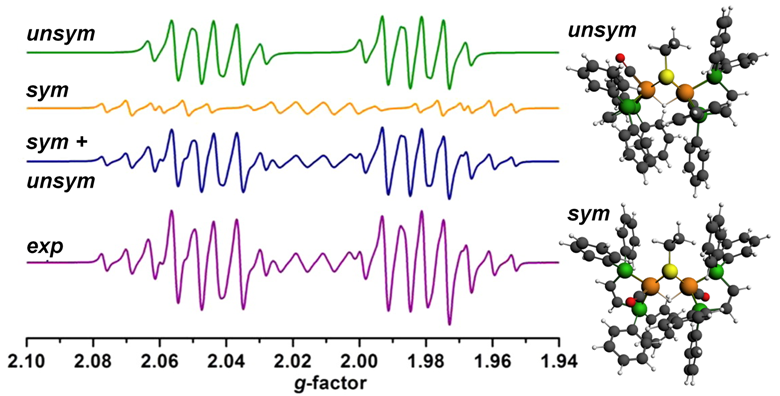Hydrogen evolution catalyst characterized with EPR
In a quest to further advance the hydrogen economy, diiron complexes, mimicking [FeFe]-H2ases have been widely studied as cheaper and more sustainable catalysts for the hydrogen evolution reaction (HER). Researchers from the University of Illinois and the MPI for Dynamics of Complex Technical Systems have isolated and characterized a mixed-valence diiron hydride, giving unique insight in the mechanistic cycle for this class of bio-mimetic HER catalysts.
The calculated (ZORA-DFT) geometries, IR shifts, and EPR parameters are in good agreement with the experimental findings and yield insight in the spin distribution in the unsymmetric and symmetric isomers.

Measured and simulated EPR spectra, using DFT-calculated g-factors and hyperfine interactions for (μ-H)Fe2(pdt)(CO)2(dppv)2
EPR, IR, ZORA, spin distribution
W. Wang, M. J. Nilges, T. B. Rauchfuss, and M. Stein, Isolation of a Mixed Valence Diiron Hydride: Evidence for a Spectator Hydride in Hydrogen Evolution Catalysis J. Am. Chem. Soc. 135, 3633-3639 (2013)
Key conceptsADF catalysis EPR IR Relativistic DFT spectroscopy